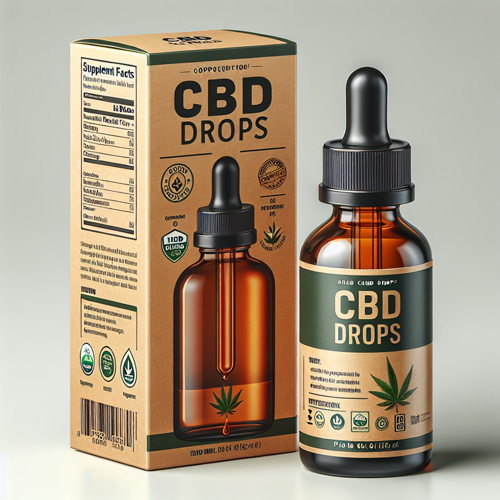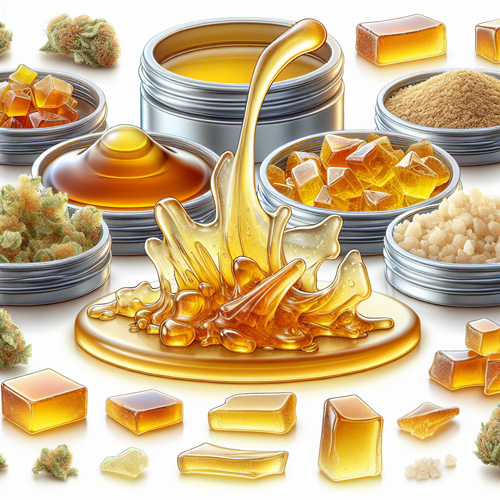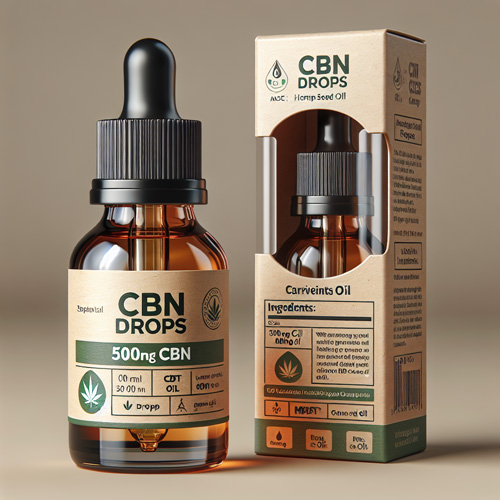
Hemp Paper Production Process
Hemp paper is a type of paper made from the fibers of the industrial hemp plant. Unlike traditional paper made from wood pulp, hemp paper is produced using natural fibers derived from the hemp crop.
This alternative material offers several advantages over tree papers, such as faster crop yield and the conservation of clean water resources. Additionally, hemp paper production has a significantly lower environmental impact compared to traditional paper manufacturing processes. With its high cellulose content, hemp fibers provide a strong and sturdy material for paper production, resulting in papers with excellent tensile strength.
Whether used for bank notes, credit bills, or even the production of archival paper, hemp paper offers a sustainable solution that is both versatile and environmentally friendly. In this article, we will explore the chemical compositions and the production process of hemp paper, highlighting its many advantages as a viable alternative to traditional paper.
History of Hemp Paper Production
Hemp paper production has a rich and significant history that dates back to the Western Han Dynasty in China. During this time, hemp fibers were processed and formed into paper sheets, creating a durable and versatile writing material. The innovation quickly spread to neighboring regions, including Korea and Japan, where it was widely adopted for both writing and printing purposes.
The introduction of hemp paper revolutionized the dissemination of knowledge, as it enabled the production of books, documents, and artworks on a larger scale. It played a pivotal role in preserving and sharing important information across societies, contributing to the advancement of cultures and civilizations. One notable example of the use of hemp paper is the Gutenberg Bible, the first major book printed in Europe using movable type. This groundbreaking work, printed on hemp paper, propelled the spread of literacy and fostered the democratization of knowledge.
In addition to the Gutenberg Bible, hemp paper was also used for printing other historically significant documents. The Magna Carta, a crucial legal document that laid the foundation for democratic principles, was printed on hemp paper. This highlights the importance and durability of hemp paper in safeguarding important historical legacies.
The history of hemp paper production is not only a testament to human ingenuity but also underscores the durability and versatility of this material. From its origins during the Han Dynasty to its use in printing iconic documents like the Gutenberg Bible and the Magna Carta, hemp paper continues to leave an indelible mark on the recording and preservation of knowledge.
Benefits of Hemp Paper Production
Hemp paper production offers numerous benefits, particularly in terms of its environmental advantages over traditional wood paper. The process of producing hemp paper is much more sustainable and efficient, making it a more environmentally friendly option.
One key advantage of using hemp stalks as raw material for paper production is their higher renewability compared to trees. Hemp crops can be harvested in as little as four months, while trees take several decades to grow. This faster crop yield means that less land and resources are required to produce the same amount of paper, reducing deforestation and preserving natural ecosystems.
Furthermore, hemp stalks contain a higher cellulose content compared to wood pulp, making them more efficient for paper production. This higher cellulose content results in a stronger paper with superior tensile strength. Hemp paper is highly durable and resistant to yellowing and cracking, making it an ideal choice for preserving important documents for long periods of time.
Expanding the use of hemp paper in writing paper production would require existing paper mills to make the necessary equipment changes. However, the potential benefits in terms of sustainability and quality make this change worthwhile. By embracing hemp paper production, paper mills can reduce their environmental impact and provide a more sustainable alternative to traditional paper.
In conclusion, the benefits of hemp paper production are clear. Its environmental advantages, renewability, higher cellulose content, durability, and suitability for preserving important documents make it a superior choice to traditional wood paper. Embracing hemp paper in wider production can pave the way for a more sustainable and eco-friendly paper industry.
Raw Materials for Hemp Paper Production
Hemp paper production relies on the utilization of hemp fibers obtained from the stalks of industrial hemp plants. These fibers serve as the primary raw material for creating durable and environmentally friendly paper.
Unlike traditional paper made from wood pulp, using hemp fibers for paper production offers several advantages. Hemp crops can be grown and harvested within a short period of four months, making them a highly renewable resource compared to trees. Additionally, hemp stalks contain a higher cellulose content, which contributes to the paper’s superior strength and tensile properties. By utilizing hemp fibers as a raw material, the production of hemp paper offers a sustainable alternative to traditional paper while reducing deforestation and preserving natural ecosystems.
Industrial Hemp
Industrial Hemp is a versatile plant that holds great significance in various industries, including hemp paper production. Grown specifically for its fibers, industrial hemp provides the raw material needed to create high-quality paper.
The production process begins by extracting long, strong hemp fibers from the plant’s stalks. These fibers possess excellent tensile strength, making them ideal for papermaking. Unlike tree papers, which require extensive deforestation, hemp paper production helps preserve our natural resources.
In addition to paper, industrial hemp is used to create textiles, ropes, and even fuel. Its adaptability makes it an invaluable asset in creating sustainable and eco-friendly products.
Hemp paper from hemp fibers offers numerous advantages over traditional paper, including durability and resistance to yellowing or crumbling over time. It also has a lower environmental impact since it can be produced using less water and fewer chemicals compared to papers made from wood pulp.
As the demand for sustainable alternatives grows, industrial hemp continues to gain popularity in various industries, including hemp paper production. Its versatility, coupled with its ability to be grown at a faster rate and in greater abundance compared to trees, makes it an attractive choice for those seeking renewable and environmentally conscious solutions.
Traditional Tree Papers
Traditional tree papers have been a significant part of paper production for centuries. Dating back to the 6th century, humans have been utilizing various types of tree papers for writing, printing, and packaging purposes. These papers have played a crucial role in preserving historical records, spreading knowledge, and facilitating communication.
Over time, paper made from trees became the dominant form of paper due to several factors. Trees, especially softwood trees like spruce and pine, contain a high cellulose content, which is the primary raw material for paper production. Wood pulp, the most commonly used material derived from trees, is processed through a series of mechanical and chemical methods to create different types of traditional tree papers.
There are various types of traditional tree papers available in the market, each with its unique characteristics and applications. These include coated paper, often used for high-quality printing and packaging, as well as writing papers and printing papers used for books, newspapers, and office documents.
Hemp prohibition has been a key factor in the dominance of tree-based paper products. Hemp had been widely used for many centuries prior to its criminalization in the early twentieth century, and its restriction has meant that there are far fewer hemp-based alternatives to traditional tree papers available on the market today.
This lack of availability has caused tree papers to become more prevalent, as they are the primary source of paper production materials to this day. The prohibition of hemp cultivation and use is therefore a major contributor to the continued reliance on tree pulp for paper production.
Despite their widespread use, traditional tree papers have raised concerns about deforestation, environmental impact, and sustainability. However, with the rise of alternative options like hemp paper, a shift towards eco-friendly and sustainable practices in paper production is gaining momentum.
In conclusion, while traditional tree papers have played a significant role in paper production and have been the dominant form for centuries, the emergence of more sustainable alternatives like hemp paper is paving the way for a greener and more environmentally-friendly future.
Natural Fibers
Natural fibers play a crucial role in the production of hemp paper. These fibers, sourced from plants such as hemp, bamboo, and agave, have gained recognition for their eco-friendly and sustainable nature. Hahnemühle, a renowned paper mill with extensive experience in using plant fibers, has successfully incorporated these natural fibers into their hemp paper production process.
Hemp fibers are known for their strong tensile strength, which translates into durable and long-lasting paper. Additionally, hemp is an excellent raw material for paper production due to its rapid crop yield and minimal use of resources like clean water. Bamboo fibers, on the other hand, offer high cellulose content and are widely appreciated for their versatility and strength.
Agave fibers, commonly used to produce paper in regions like Saint Petersburg since the 13th century, provide unique characteristics to the paper, such as increased flexibility and resistance to tearing. Hahnemühle has effectively utilized these natural fibers to create a range of hemp paper products that cater to diverse needs, including writing paper, bank notes, and archival paper.
By utilizing natural fibers like hemp, bamboo, and agave, Hahnemühle demonstrates its commitment to sustainable paper production. These fibers offer an eco-friendly alternative to traditional tree papers, reducing the environmental impact associated with deforestation and excessive use of resources. With their expertise and dedication to quality, Hahnemühle continues to lead the way in producing high-quality hemp paper that meets the demands of various industries.
Recycled Materials for Paper Production
Recycled materials play a vital role in the production of hemp paper, offering numerous benefits for the environment and the paper industry. By using recycled materials in paper production, such as hemp paper, we can significantly reduce greenhouse gas emissions, lower energy use, and minimize pollution.
One of the key advantages of using recycled materials is that it helps conserve natural resources. Instead of relying solely on new raw materials, incorporating recycled content into hemp paper production reduces the need for additional resources like water and energy. This not only lowers the overall environmental impact but also supports sustainable practices.
Moreover, using recycled materials results in fewer greenhouse gas emissions. The process of recycling hemp paper requires less energy compared to producing paper from virgin materials. As a result, the emissions of carbon dioxide and other harmful pollutants are significantly reduced, contributing to a greener and more sustainable paper production process.
Additionally, the ability to recycle hemp paper multiple times is a distinct advantage. Unlike traditional tree-based paper that can only be recycled three times, hemp paper can be recycled up to seven times. This extended recyclability not only saves valuable resources but also reduces waste and landfill usage.
Incorporating recycled materials into hemp paper production offers a range of benefits. From reduced greenhouse gas emissions and lower energy use to extended recyclability and minimized pollution, using recycled materials helps create a more sustainable and environmentally friendly paper industry.
Process of Making Hemp Paper
The process of making hemp paper involves several steps, starting with the harvesting and processing of the raw material. Industrial hemp fibers are extracted from the hemp crop, which has a faster crop yield and requires less water compared to trees used for traditional paper production.
Once the hemp fibers are obtained, they are turned into pulp through a process of grinding and refining. This pulp is then mixed with water and other additives to create a paper slurry. The slurry is spread onto a screen or wire mesh to form a wet paper sheet. Excess water is pressed out, and the paper is then dried and finished.
The resulting hemp paper has excellent tensile strength due to the high cellulose content in the natural fibers. It can be used for a variety of purposes, including printing papers, banknotes, filter bags, and even cigarette paper. This production process is not only more sustainable but also contributes to the conservation of valuable natural resources such as water and energy.
Harvesting the Fiber from the Plant Stalk
The production of hemp paper begins with the process of harvesting the fiber from the plant stalk. Depending on the desired quality and fineness of the fibers, the plants are usually harvested when they reach full maturity and the stalks have reached their peak strength.
Once the plants have been harvested, the next step is to prepare the plant stalks for fiber extraction. This involves removing the leaves and seeds from the stalks, leaving behind the long fibers that will be used to make the paper. The stalks are then soaked in water for a period of time, typically 24 to 48 hours, to soften the fibers and make them easier to separate.
To maximize fiber yield, various additional steps and techniques may be utilized. These include carefully monitoring the soaking process to ensure optimal conditions for fiber extraction. The plants are often agitated in the water to help break apart the fibers and improve the overall yield. Some producers also use mechanical equipment to scrape or break the stalks after soaking, further separating the fibers.
Retting is another important technique used in the production of hemp paper. This involves the controlled rotting of the stalks, usually in water or on damp ground, to break down the non-fiber components and facilitate the separation of the fibers. Retting can be done naturally over a period of several weeks, or it can be accelerated by using chemicals or enzymes. Once the retting process is complete, the fibers are thoroughly rinsed and dried before they can be used in the paper-making process.
The process of harvesting the fiber from the plant stalk for hemp paper production involves removing the leaves and seeds, soaking the stalks, and utilizing techniques like retting to separate the fibers. These steps are essential in order to obtain high-quality fibers that can be used to create durable and sustainable hemp paper.
Preparation and Retting the Fiber for Papermaking
The preparation and retting process is a crucial step in the production of hemp paper. After harvesting the hemp plants, the stalks are prepared to extract the fibers needed for papermaking.
The preparation process involves removing the leaves and seeds from the stalks, leaving only the long hemp fibers. The stalks are then soaked in water for up to 48 hours, softening the fibers and making them easier to separate. This soaking process may involve agitation to break apart the fibers and enhance the overall fiber yield. Mechanical equipment can also be used to scrape or break the stalks further for better separation.
Retting is the next important step in preparing the fibers. It involves controlled rotting of the stalks to break down non-fiber components and facilitate fiber separation. Retting can be done naturally over several weeks or accelerated using chemicals or enzymes. Once retting is complete, the fibers are rinsed and dried thoroughly before they are ready for papermaking.
The preparation and retting process of hemp fibers involves removing unwanted parts from the stalks, soaking them in water to soften the fibers, and utilizing retting techniques to separate the fibers. These steps ensure that the hemp fibers are suitable and ready for the papermaking process.
Separating the Fiber from Other Plant Material
When making hemp paper, the first step is to separate the fiber from other plant material. This process is crucial to ensure high-quality paper production.
There are several methods used to separate the fiber from the rest of the plant. One common technique is the process of retting. This involves soaking the stalks in water for an extended period to soften the fibers and break down non-fiber components. The water helps to remove impurities and make the fiber easier to separate.
Mechanical equipment can also be utilized to further break down the stalks and enhance fiber separation. This can include scraping or breaking the stalks, maximizing the overall fiber yield. The use of mechanical equipment speeds up the process and ensures efficient separation.
Using hemp fiber for paper production offers numerous benefits compared to other plant materials. Hemp fibers have higher cellulose content and stronger tensile strength than traditional wood pulp used in paper production. This results in more durable and longer-lasting paper products. Additionally, hemp is a fast-growing crop, providing faster crop yields and reducing the need for large-scale deforestation.
As sustainability becomes increasingly important, the demand for environmentally friendly paper products has grown. Hemp paper production plays a significant role in this aspect. Hemp cultivation requires less water and fewer pesticides than other fiber crops, making it a more sustainable choice. By using hemp fiber for paper production, we can lower the environmental impact and contribute to a greener future.
Beating and Scutching the Fiber into Pulp
Once the hemp stalks have been retted and the fibers separated from the non-fiber components, the next step in the hemp paper production process is beating and scutching.
Beating is the process of mechanically refining the hemp fibers to create a pulp that can be used to make paper. The fibers are typically fed into a machine called a beater, which consists of a series of rotating blades or beaters that shred and break down the fibers. This action helps to further separate the fibers and increase their surface area, making them more suitable for papermaking.
Scutching, on the other hand, involves the removal of excess impurities and non-fiber components from the beaten fibers. This can be done by either hand or machine scutching. Hand scutching involves manually removing the impurities by scraping or beating the fibers with a wooden scutching knife, while machine scutching utilizes mechanical equipment to achieve the same result more efficiently.
Once the fibers have been beaten and scutched, they are ready to be transformed into pulp slurry. The pulp is created by filling a vat halfway up with clean water and gradually scooping the beaten and scutched fibers into the vat. The fibers are stirred in the water, breaking apart and forming a homogeneous mixture known as pulp slurry.
Using hemp as a raw material for papermaking offers several advantages. Hemp fibers have a higher cellulose content than traditional wood pulp, resulting in stronger and more durable paper products. Additionally, hemp has lower lignin content, which reduces the need for harsh bleaching chemicals during the paper production process. These factors contribute to the production of high-quality, environmentally friendly paper.
Cooking and Refining the Pulp Mixture
After creating the pulp slurry, the next step in the hemp paper production process is cooking and refining the mixture. The pulp slurry is heated and cooked to break down the fibers and remove impurities, resulting in a smooth and consistent pulp mixture.
To cook the pulp slurry, it is transferred into a large vessel or digester. This vessel is heated to a specific temperature, usually around 160-180 degrees Fahrenheit, and the pulp is cooked for a predetermined amount of time. Cooking the pulp helps to break down the fibers, making them more pliable and easier to work with.
During the cooking process, impurities and non-fiber components are also eliminated. These impurities, such as lignin and hemicellulose, are unwanted substances that can affect the quality and strength of the paper. The heat and chemicals used in the cooking process help to dissolve and remove these impurities.
After cooking, the pulp mixture is refined to create a smooth and consistent texture. This refining process involves beating the cooked pulp in a machine called a refiner. The refiner consists of rotating discs or bars that further break down the fibers and create a more uniform pulp.
Cooking and refining the pulp mixture is an essential step in producing high-quality hemp paper. It helps to break down the fibers and remove impurities, resulting in a pulp with optimal fiber composition and strength. This process plays a crucial role in ensuring that the paper has strong tensile strength and can withstand rigorous use.
Forming a Sheet of Wet Paper on a Screen Mold
To create a sheet of wet hemp paper, the process begins by using a screen mold. This mold consists of a frame with a screen stretched across it.
1. Start by laying a layer of cotton interfacing on top of the wet hemp paper. The cotton interfacing helps to absorb excess water and promote a more even drying process.
2. Next, place a sheet of wool fabric on top of the cotton interfacing. The wool fabric acts as a supportive layer, aiding in the formation of a smooth and sturdy sheet of paper.
3. To further remove excess water and encourage the fibers to bond together, press the stack firmly with a wood board. This pressing action helps to align the fibers and create a denser paper product.
Throughout this process, the wet paper slowly dries and solidifies into a usable sheet. The combination of the cotton interfacing, wool fabric, and pressing helps to ensure that the paper is strong, uniform, and ready for use.
By following these steps, the wet hemp paper can be transformed into a practical and versatile material that can be used in a variety of applications.

































